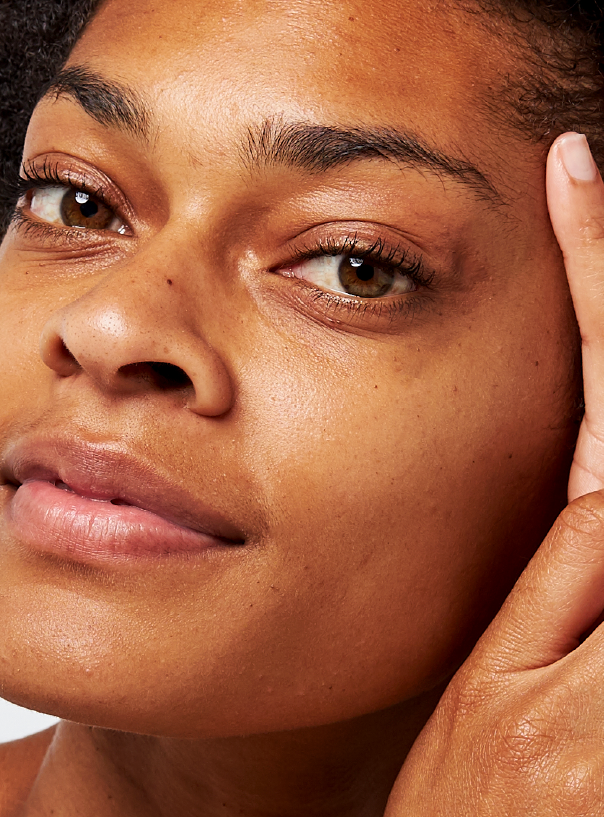Education
What is Purging?
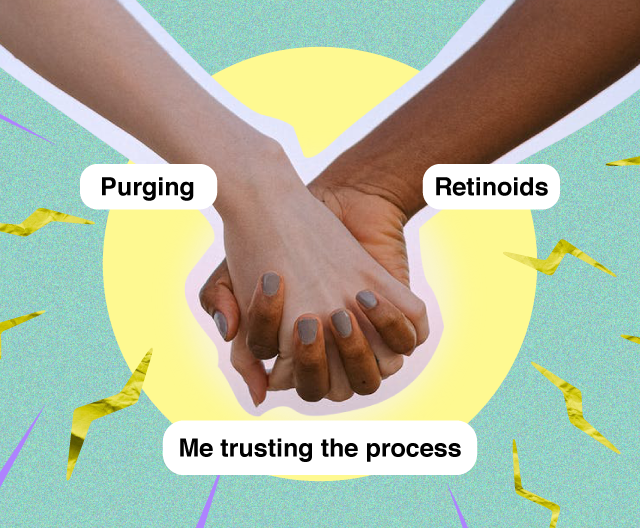
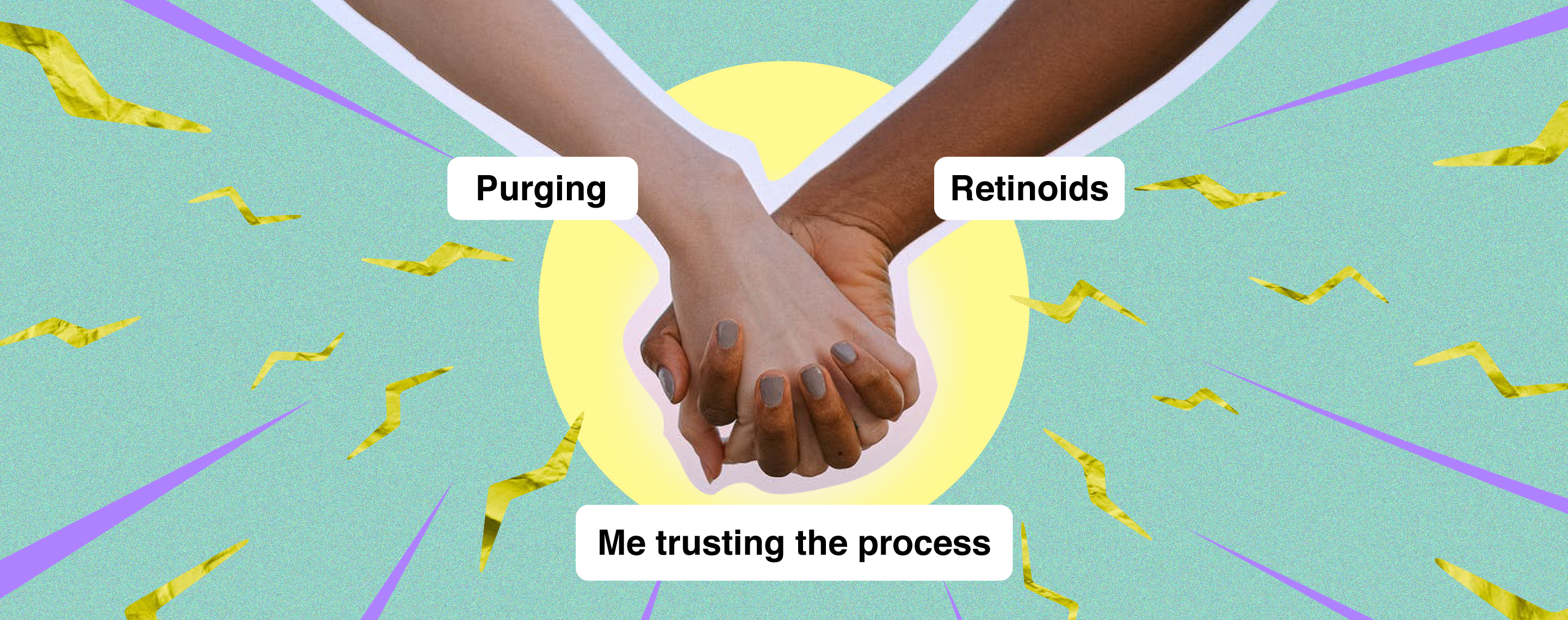
SHARE
Education
What is Purging?
Medically reviewed by Aimee Paik, MD
Written by Annie Lam
Last updated 8/1/2024
When you talk to someone about using retinoids like tretinoin, they’ll usually warn you about the “purging process”. While some may say purging is inevitable, not everyone experiences it. It depends on you and your skin! We’re breaking down what purging is, why it happens, and some stories from our community. They’ll be sharing their personal experiences with starting out on retinoids and what their purging process was like.
What is purging?
Purging typically looks like an initial increase of acne and clogged pores when starting products with ingredients like exfoliating acids and retinoids. These ingredients help to speed up your skin’s cell turnover rate. So you may initially experience a “purge” of increased breakouts because it’s bringing any dead skin and build up in the pores to the surface. Some people can also experience purging when increasing the strength of their products.
It’s also important to note that purging can differ from person to person in terms of severity, frequency, and length of time. Some types of acne that you can experience during this period include whiteheads, blackheads, papules, pustules, cysts, and other forms of congestion. Purging can last anywhere from a few weeks to a few months. We know it can be a tough process, but clearer skin is on the other side!
What ingredients cause purging?
Purging can happen with all types of retinoids, but is more likely with prescription-strength options like tretinoin. Azelaic acid and exfoliating acids like glycolic, lactic, and salicylic acids can also cause purging when first introducing them to your routine. Oral medications are sometimes used alongside topical treatments to prevent or treat purging.
What’s the difference between purging and breaking out or irritation?
When you’re trying out new products, it can be hard to tell the difference between purging and breaking out. According to our medical director Dr. Aimee Paik, acne is dynamic and can be caused by a lot of different factors like stress, diet, or time of month. If you’re noticing a slight increase in breakouts, it may be just regular fluctuations that are normal for acne. Your treatments may just need more time to work! If you’re noticing much more acne than you’re used to, this could be a result of purging. Purging should only happen with ingredients that increase your skin’s cell turnover rate.
Purging generally happens in the areas where you usually break out. So if you’re noticing increased acne in areas you don’t typically break out, it could be a reaction. Some people also experience irritation when starting out with retinoids - peeling, redness, or increased dryness/flaky skin. You can experience purging and irritation at the same time and it can take up to 10 weeks for your skin to adjust to retinoids. Be patient with your skin during this adjustment period!
Patient Stories
We know starting out on retinoids can be tough, so today we asked some patients to share their experience with using retinoids and their purging process.
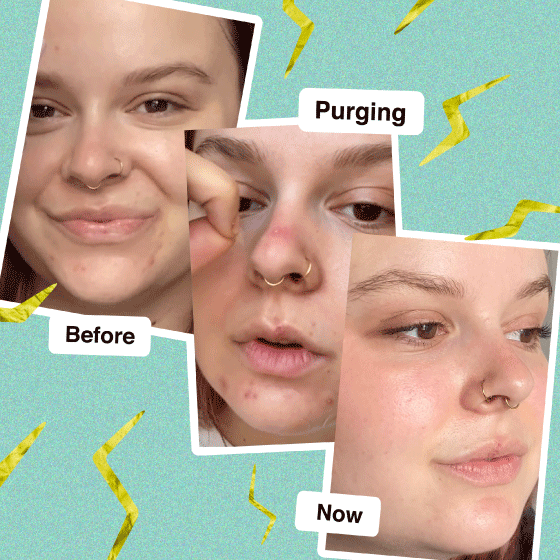

Rachel: “I’ve experienced the retinoid purge twice in my life, and it wasn’t easier the second time. It can be really difficult to look at yourself and see a completely different person. A person with more acne, more irritation, more redness than you’ve ever had in your entire life. And for me, it was just about trusting the process, being gentle and kind to myself and my skin, that was able to get me through that period to help me reach the best skin I’ve ever had in my entire life. So, it’s definitely worth it.”
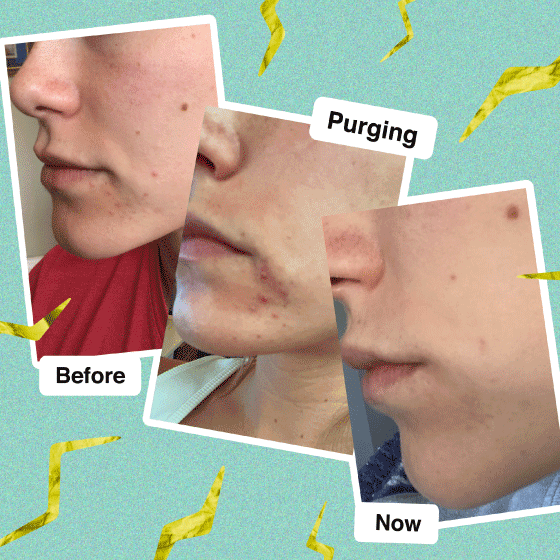
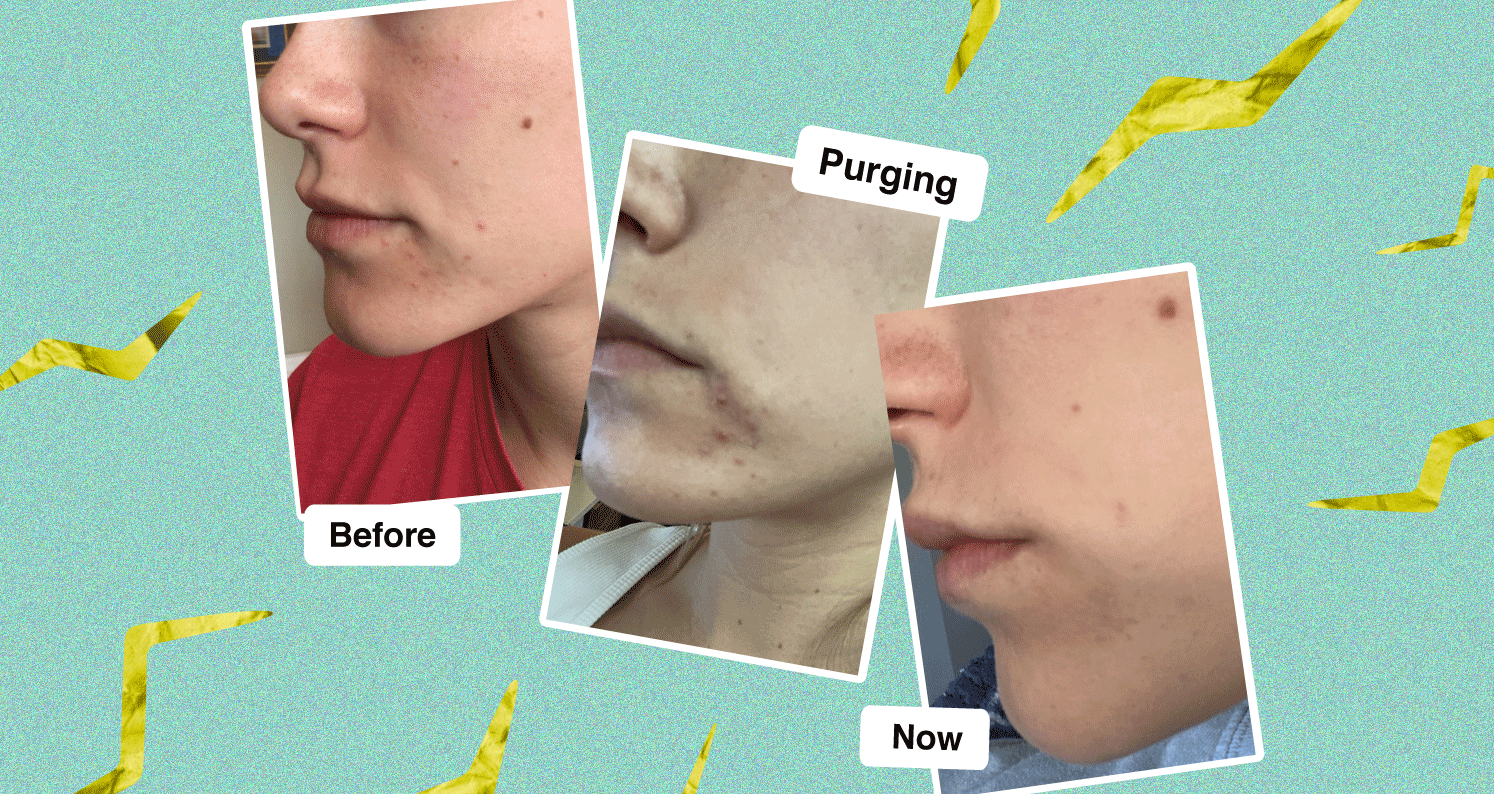
Lizzy: “My acne was very painful and persistent. I had hormonal acne for nearly four years straight and wondered if it would ever go away. When I decided to try Apostrophe I told myself I would give it my all. I stuck to the prescribed regimen even when my acne got noticeably worse and also when my skin began to flake. It took about three full months for my acne to improve and it was not a linear journey... my skin definitely got worse before it got better. But now my skin is clear and I even notice the anti-aging benefits of the cream I was prescribed. I’m so confident in my skin now and I love wearing makeup without feeling the need to hide anything.”
How to handle purging?
Keep your routine simple. Use gentle products alongside your retinoid to avoid further irritating your skin. Eliminate “extra” products in your routine like toners and exfoliating acids.
Introduce these products slowly. Starting out on your retinoid two to three times a week can help minimize the purging process. As your skin adjusts to the retinoid,
Be generous with your moisturizer. Keep your skin well hydrated when using retinoids to help keep your skin barrier strong. Using a hydrating moisturizer can also help with dryness and irritation!
Be patient with your skin. Experiencing an initial purge when starting out with retinoids is normal. Purging can last anywhere from a few weeks to a few months, depending on your skin. If you are still experiencing breakouts and irritation after this time, we recommend reaching out to your dermatology provider!
While it may “get worse” before it gets better, once your skin adjusts to your retinoid you’ll experience clearer, smoother skin in the long run. It’s worth sticking it out! If you have questions about your treatment plan, we always recommend reaching out to your online dermatologist or provider. They’re here for you every step of the way. ❤️
Shop this post

Tretinoin

Finacea (azelaic acid)
Like what you just read? Sign up for our email list to get the scoop on skincare science delivered straight to your inbox.

Deep Dives
A dermatologist shares his thoughts on the recent studies about benzoyl peroxide and benzene.
Read More
Education
What is milia?
What is milia? Today, we’re jumping into one type of bump that you may have heard about most commonly in infants — milia.
Read More
Education
Best moisturizer for acne-prone skin
If you have combination acne-prone skin, figuring out which moisturizer is best for your skin might be tough. In this guide, we break down the best moisturizer for combination, acne-prone skin.
Read More
